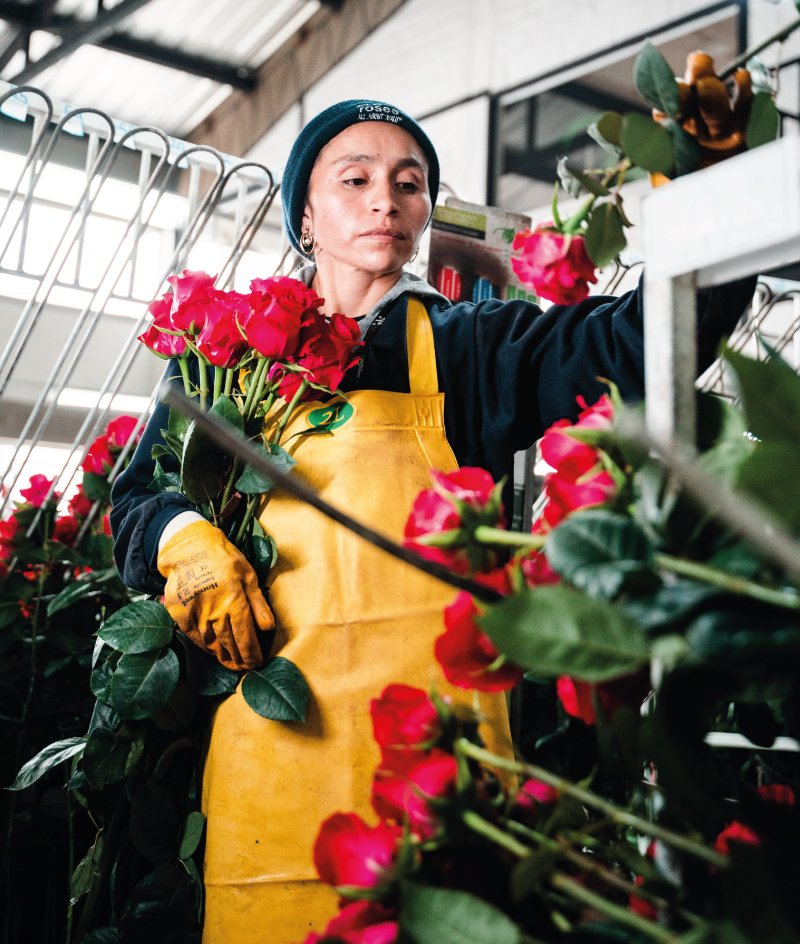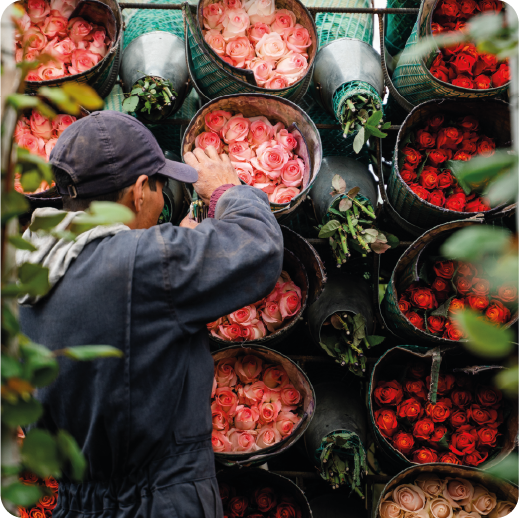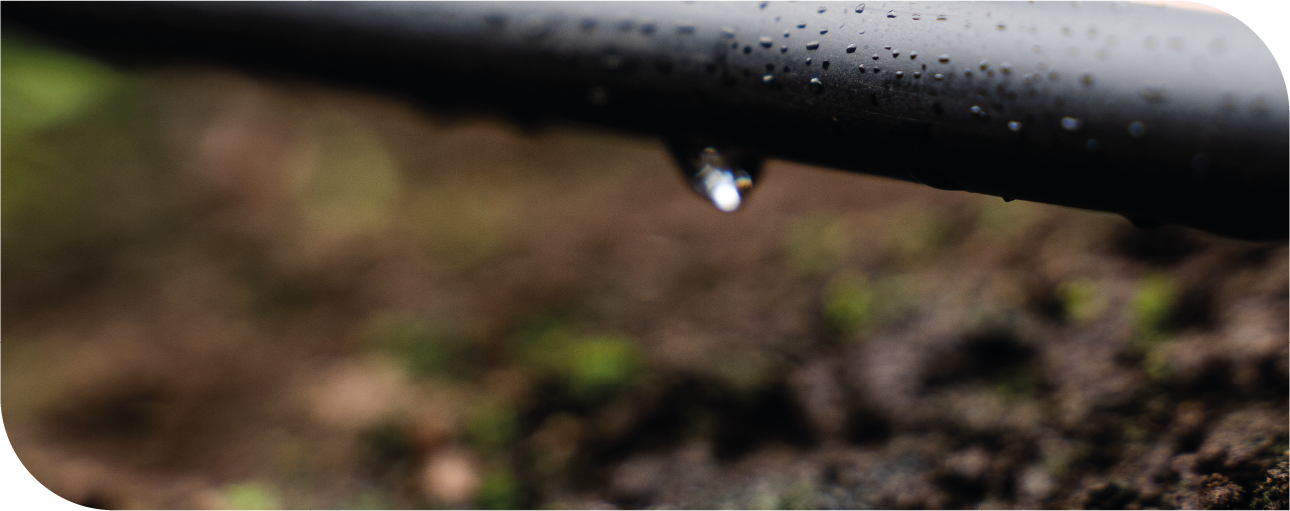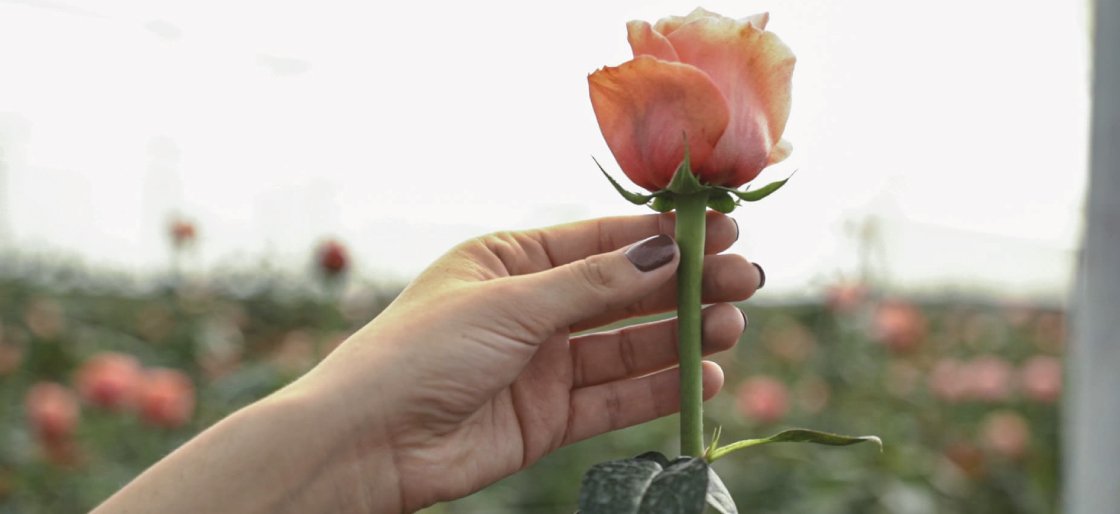Our Processes
Our Processes

Our Processes
Altitude aside, the weather and soil conditions of the Machachi region are incredibly optimal for growing premium quality flowers. With an average temperature of 13º C, twelve hours of sunlight everyday (all year round) and fertile volcanic soil, this region provides the key ingredients for our distinct quality roses and ranunculus.
These unbeatable natural conditions – combined with strict quality control at each stage of the production process – ensures that ECOROSES can offer roses and ranunculus with exceptional quality and beauty for each of the different markets worldwide.
GROWING

Production
Our ecological certifications and seals guarantee that our premium quality flowers are grown in harmony with our philosophy of social and environmentally sustainable production.
The ECOROSES culture focuses its attention on details; beginning with the meticulous selection of rose and ranunculus varieties followed by the careful planting, nursing, harvesting and manual classification of them – stem by stem! all the way to packing and transporting our flowers. All plants that are grown by ECOROSES are adequately managed to produce long stems and large, vibrantly colored flowers, regardless of the type of flower. Constant training of our staff is the key to fulfilling this goal.
The variety of roses and ranunculus grown by ECOROSES come from some of the best breeding companies in the world, and all rights to use their breeds have been legitimately acquired and compensated for.
Irrigation
ECOROSES has a modern and completely automated irrigation system, which enables us to control and optimize the use and application of water and fertilizers – ultimately ensuring the proper growth of the plants and the quality of the flowers.

COLD CHAIN
Post - Harvest
The post-harvest area spans 2,000 m2. It is within this area that on an individual basis we aim to obtain fresh, consistent, and standardized quality products for each customer and market.
The criteria we employ to classify the flowers are grounded in the integrity and quality of their characteristics, which encompass:
* Length and thickness of stem
* Size of bud
* Opening or cutting point
* Color of the flower
* Health and condition of foliage
After classification, roses are wrapped in corrugated cardboard for protection, with their foliage shielded by a plastic sleeve to prevent dehydration and transport damage. On the other hand, ranunculus are packed in bunches of 10 stems, wrapped in specialized paper and a plastic sleeve for protection. To ensure hydration, we employ Chrysal Arrive Alive technology.
Every bunch, both roses and ranunculus, are identified with a label stating the variety, stem length, date of processing, number of stems per bunch, and the code of the person who prepared the bunch.
Cold Rooms
There are two important cold areas at ECOROSES. With a total of 4,300 m3 of cold space, this key link of our cold chain guarantees the quality and vase life of our roses and ranunculus before arriving at the customer’s doorstep. First, we have a pre-cool area where the outdoor heat is removed from the flowers as they arrive from the field, swiftly halting the opening of the flowers. Secondly, we have a large hydration and packing cold-room where temperature is kept between 0.5°C and 2°C guaranteeing quality prior to shipping.
After processing the flowers as such, they are then hydrated for at least 7-hours (at temperatures ranging from 0.5°C to 2ºC) with high quality, organic, and 100% biodegradable floral-preservative produced on site from sodium chloride, Neuthox +xprt, which additionally increases vase life by 4 to 5 days. Reaching and maintaining low temperatures are key to ensuring product quality and vase life.
In all our cold rooms we have aerocide and ethylene removal units that constantly clean the air and remove ethylene, thus preventing premature aging and the development of diseases while still preserving the quality of the flower.
Hydration
Packaging
Download Important information for freight Click here
Packaging is also carried out at a temperature between 0.5°C and 2ºC. Grouped and labeled boxes remain in this area until they leave in a refrigerated truck for their short journey to Mariscal Sucre Airport in Tababela. The loading process of the boxes is direct from the cold room to the truck, maintaining the same temperature range.
We offer the market several packaging alternatives: half-sized boxes or tobacco (HB) and/or quarter-sized boxes (QB); all designed to optimize the volume / weight relationship, and therefore minimize the freight cost per stem to our customers. For our roses, the measurements of the HB boxes we offer are: 100, 120 and 150 cm long; while the QB boxes are 80, 90 or 100 cm long. For ranunculus we use an EB box: 100cm long.
When it comes to packaging, ECOROSES has a FLEXIBILITY POLICY in place as part of its customer service. This can be requested so long as it does not jeopardize our quality standards.
Flower Care


Caring About Roses
When unpacking, you may find some outer or guard petals, which look discolored or like they are wilting, gently peel them away to allow roses to bloom. For better results, roses stems should be cut underwater for preventing air bubbles from forming in the stem, which can cause the roses to droop early.

Caring about Ranunculus
Carefully remove the packing from the ranunculus flowers, stems are hollow and easily can break. Support the stems using a tall vase, and don’t overcrowd them. The stems will appear wilted if they do not have adequate support during rehydration. For better results, stems should be cut underwater for preventing air bubbles.
Follow these flower care tips, and enjoy beautiful,
vibrant blooms that perform longer and brighten up any space.
What You Must Do
Watering
- Clean your vase thoroughly as any lingering bacteria will make your flowers wilt faster.
- Fill it two-thirds with fresh, room temperature water, and add a small amount of sugar as food, and little vinegar to eliminate water bacteria. If possible, mix a floral preservative into water.
- Flowers drink a lot of water! Check water level daily and replenish as needed.
Fresh Cut
- Before putting your fresh flowers in the vase, trim them diagonally – 45 degree angle – with a clean scissor or knife.
- Remove any foliage that will sit below the waterline to avoid build-up of debris. Leaves should never meet the water.
Arragement
- Location.- do not place the flower arrangement in a sunny place; it is preferable to put it in a cool and shady place.
- Changing water, every 2 to 3 days to maintain water clean and long lasting flowers.
- Tip: If after a few days your roses start to droop, cut again the stems underwater again and gently shake them to allow any air bubble to escape.




